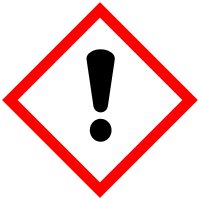
Photo from wikipedia
Visual system is increasingly recognized as a sensitive target of xenobiotics in aquatic ecosystems. Various environmental pollutants of distinct physicochemical properties are able to impair the retinal development and function… Click to show full abstract
Visual system is increasingly recognized as a sensitive target of xenobiotics in aquatic ecosystems. Various environmental pollutants of distinct physicochemical properties are able to impair the retinal development and function of teleost fishes, including dioxin-like pollutants, flame retardants, pesticides, perfluoroalkyl acids, retinoic acids and metals. Considering the availability of developmental and functional database, zebrafish has been the most frequently used as the teleost model to study aquatic visual toxicology. A diversity of visual deficits has been displayed for fishes across multiple levels of biological organizations (e.g., molecule, cell, histology, physiology and behavior). Covering sensitive developmental windows of eyes during early embryogenesis, acute or chronic exposure to xenobiotics can disturb the expressions of visual gene and protein markers, which affect the retinal neurogenesis and induce degeneration of neurons. Morphological structures and physiological responses of retina and optic tectum are then disorganized, eventually compromising the performance of visually-mediated behaviors and recruitment of individuals. Environmental pollutants can cross the blood-retina barrier and accumulate in eyes, which might impact visual system directly. In addition, pollutants are very likely to interrupt retinal development and function indirectly by disturbing the signaling of retinoids and thyroid. However, exact mechanisms of visual toxicity are largely unknown currently. In this review, the development and structure of retina and available tools for studying visual science are described briefly. Advances in visual toxicology are summarized in detail and outlooks for future visual toxicity studies are discussed.
Journal Title: Aquatic toxicology
Year Published: 2020
Link to full text (if available)
Share on Social Media: Sign Up to like & get
recommendations!